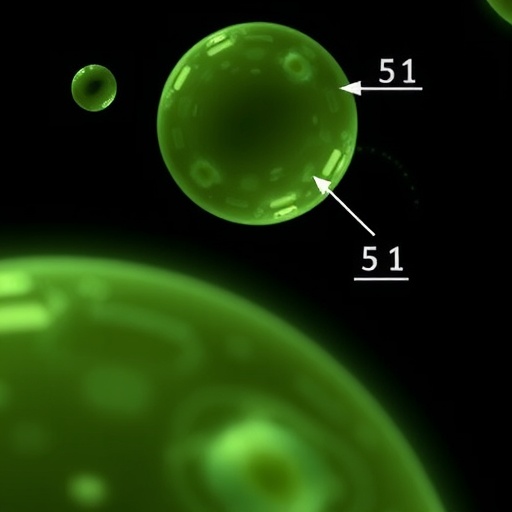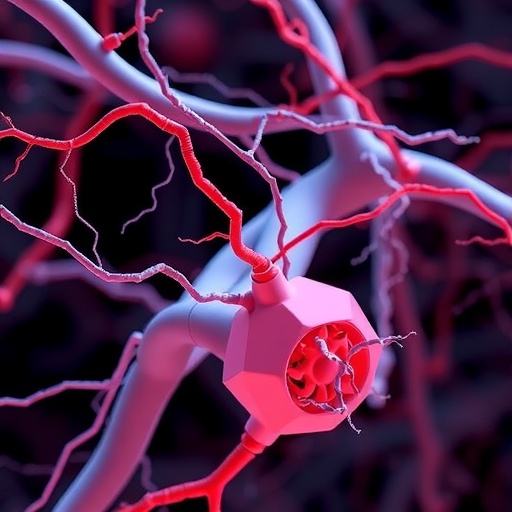In a groundbreaking review published in Reproductive Sciences, researchers Mehravar, Salimi, and Kazemi have explored the innovative use of mesenchymal stem cell (MSC)-derived extracellular vesicles and bioscaffolds to enhance the in vitro maturation and culture of oocytes. This work represents a significant advancement in reproductive science, potentially transforming the methodologies involved in assisted reproductive technologies (ART).
The application of MSC-derived extracellular vesicles (EVs) in reproductive medicine is burgeoning, driven by an academic quest for improved oocyte quality and development. Extracellular vesicles, which are naturally occurring nanoparticles, have been demonstrated to play a pivotal role in cellular communication and transport of bioactive molecules. By harnessing these vesicles derived from MSCs, researchers are uncovering new avenues for enhancing oocyte maturation, a critical step in the context of ART.
In vitro maturation (IVM) of oocytes has gained attention due to its potential benefits over traditional in vitro fertilization approaches. The efficiency of IVM, however, has been limited by oocyte quality and developmental competence. To address these challenges, MSC-derived EVs have emerged as a promising solution. These vesicles contain a rich array of proteins, lipids, and RNAs, which can significantly influence oocyte maturation, enhance cellular signaling, and ultimately improve developmental outcomes.
Bioscaffolds, another key focus of the study, serve as three-dimensional structures that mimic the extracellular matrix. They provide a supportive environment for oocyte growth and maturation, facilitating the interaction between oocytes and surrounding somatic cells. The incorporation of MSC-derived EVs in these bioscaffolds enriches the microenvironment, creating a bioactive mediating factor that can streamline oocyte maturation processes.
Research indicates that the combination of MSC-derived EVs and bioscaffolds can not only enhance the maturation of oocytes but also optimize subsequent developmental stages of embryos. This synergistic effect is attributed to the multi-faceted action of EV components, which can modulate cellular transcription, promote survival, and enhance cellular processes essential for oocyte maturation.
Further studies have shown that exposure to MSC-derived EVs can increase the metabolic activity of oocytes during IVM, a critical parameter that correlates with successful fertilization and embryo development. In particular, the presence of RNA and various growth factors within these vesicles plays a vital role in fostering anabolic processes, ultimately leading to the production of healthier oocytes.
Moreover, the potential application of MSC-derived EVs extends beyond oocyte maturation. Researchers are investigating their role in the early stages of embryo development. The communication between maturing oocytes and surrounding granulosa cells is complex and crucial, and the inclusion of EVs in this dynamic can significantly influence developmental decisions made by both oocyte and somatic cells.
The implications of these findings are profound. As ART continues to evolve, the exploitation of MSC-derived technologies is poised to refine clinical practices, making procedures more effective and potentially increasing success rates in assisted reproduction. By bridging the gap between basic research and clinical applications, this work heralds a new era where stem cell technology and reproductive health intersect.
While the blending of MSC-derived EVs and bioscaffolds opens exciting possibilities, it also raises ethical and regulatory considerations. Ensuring the safe application of these technologies in humans will require rigorous evaluation and adherence to guidelines that govern stem cell research and reproductive interventions. Researchers are advocating for collaborative efforts among scientists, ethicists, and policymakers to navigate these challenges effectively.
Preliminary results from various ongoing trials indicate a striking potential for improved ART outcomes when integrating MSC-derived EVs into current practices. Future research should focus on standardizing protocols for EV extraction, characterization, and application to facilitate consistency and reproducibility across the field. The commitment to advancing our understanding of oocyte biology will undoubtedly foster innovations that can transform reproductive medicine.
The significant findings detailed in this review could lead to the next wave of therapeutic applications in the realm of reproductive health. By enhancing our grasp of the molecular players involved in oocyte maturation and utilizing advanced biological scaffolding, we may soon witness a paradigm shift in how oocytes are matured and embryos are developed in vitro.
In summary, the use of MSC-derived extracellular vesicles and bioscaffolds represents a novel approach aimed at boosting oocyte maturation and enhancing the success of ART. The transformational potential of this research not only aims to improve fertility outcomes but also beckons a future where reproductive technologies are more effective, accessible, and ethically sound. As we venture deeper into this field, continuous exploration and integration of scientific advancements will be paramount to achieve these goals.
Subject of Research: Enhancement of oocyte in vitro maturation using MSC-derived extracellular vesicles and bioscaffolds.
Article Title: Utilization of MSC-Derived Extracellular Vesicles and Bioscaffolds in Enhancing Oocyte In Vitro Maturation and Culture: A Review.
Article References:
Mehravar, M., Salimi, M., kazemi, M. et al. Utilization of MSC-Derived Extracellular Vesicles and Bioscaffolds in Enhancing Oocyte In Vitro Maturation and Culture: A Review.
Reprod. Sci. (2025). https://doi.org/10.1007/s43032-025-01889-5
Image Credits: AI Generated
DOI: 10.1007/s43032-025-01889-5
Keywords: Mesenchymal Stem Cells, Extracellular Vesicles, Oocyte Maturation, Bioscaffolds, In Vitro Fertilization, Reproductive Medicine
Tags: applications of MSCs in fertility treatmentsassisted reproductive technologies advancementsbioscaffolds in reproductive scienceenhancing developmental competence of oocytesextracellular vesicles and cellular communicationimproving oocyte quality with EVsin vitro maturation techniquesinnovative approaches to oocyte culturemesenchymal stem cell-derived extracellular vesiclesMSC-derived vesicles in reproductive medicineoocyte maturation in vitroreproductive science breakthroughs





